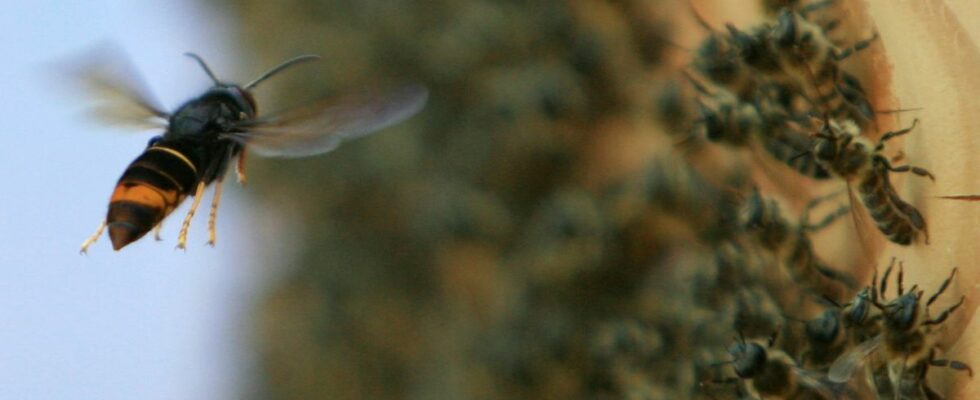This summer two cyclists were hospitalized in absolute emergency after being bitten by around fifty Asian hornets, in the Loire. A rather rare phenomenon. Because the real victim of Vespa velutina is not the man, but the bee. This implacable predator shreds them when they leave the apiaries, especially in the fall, when they are weakened and constitute their last stock for the winter.
For beekeepers, it is one more scourge, in addition to that of pesticides. While some strive to create hornet traps, Florent Coletta had the idea of going back to the nest. To achieve this, this engineer from Toulouse used his skills in on-board technologies, which are very, very miniaturized.
“One day, some friends were bitten by Asian hornets. We thought we had to find the nest and destroy it, but first we had to find it. I said to myself that we could equip the hornet with an electronic chip. It was an exciting challenge from a technical point of view, but it also had a social and ecological interest for the protection of bees”, explains the creator of the intuitive society.
Follow the hornet on foot or with a drone
Last spring, he threw himself fully into the development of a technical device, in order to develop a chip that can be detected at a distance of 100 to 200 meters. Either on foot or by means of a drone which follows the nano-tracer if the area allows it and is authorized to fly over, the hornet being able to fly over a distance of 1.5 km. But above all, this chip had to be as light as possible, less than 0.5 grams, so that it did not prevent the insect from taking flight.
He had to wait for the beginning of summer, and the return of the insect, to start testing his equipment. Florent Coletta then contacted the beekeepers’ union but also various associations, such as the one that operates apiaries on the agricultural estate of the city of Toulouse.
Two thousand hornets per nest
“At the beginning, the equipped hornets did not return to the nest, this external body bothered them. I had to modify the chip and retest. I got results and managed to flush out three nests using fifteen fleas. I will continue to validate the technology until the end of November, ”assures the boss of the company Intuite who has trained in the removal of nests, in order to be able to offer a complete solution to beekeepers.
The latter are indeed in demand for a solution capable of reducing this nuisance. Because each nest is home to around 2,000 hornets, including many “foundresses” who the following season may have to create their own nest. Hence the interest in destroying them and “thus creating free zones and reducing the pressure on the apiaries”, insists the inventor.
If his technology is proven, today, the engineer wants to be able to offer beekeepers an intervention price that is not prohibitive, when they are sometimes already obliged to pay outrageous sums to afford new colonies of bees. “A beekeeper cannot pay for an intervention between 1,000 and 2,000 euros. I am now making the chip, the price of which I can reduce by 50 to 100 euros. We now have to make the hunt more efficient to use as few tracers as possible to find the nest and find funding so that it is affordable,” concludes Florent Coletta, who hopes to forge partnerships, particularly with local authorities, to be able to launch next year.

